[press release]
National Postal Museum Announces Smithsonian Philatelic Achievement Award Recipients
Alfredo Harp Helú, Janet R. Klug and Charles F. Shreve Will Receive Award Oct. 19
The Smithsonian’s National Postal Museum has announced the 2019 Smithsonian Philatelic Achievement Award recipients, Alfredo Harp Helú, Janet R. Klug and Charles F. Shreve. They will be honored at a gala at the museum Oct. 19.
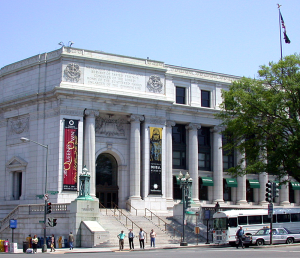 The Smithsonian Philatelic Achievement Award (SPAA) was established in 2002 to honor and celebrate living individuals for outstanding lifetime achievement in the field of philately. This achievement may include original research that significantly advances the understanding of philately, exceptional service to the philatelic community or sustained promotion of philately to the benefit of current and future collectors.
The Smithsonian Philatelic Achievement Award (SPAA) was established in 2002 to honor and celebrate living individuals for outstanding lifetime achievement in the field of philately. This achievement may include original research that significantly advances the understanding of philately, exceptional service to the philatelic community or sustained promotion of philately to the benefit of current and future collectors.
“The National Postal Museum is honored to present this prestigious award to these distinguished individuals,” said Elliot Gruber, director of the museum. “This lifetime achievement award recognizes their exceptional service to the international philatelic community, to the benefit of current and future collectors.”
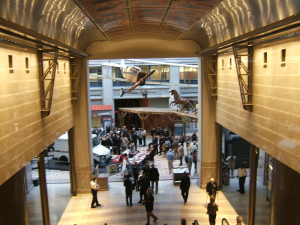 The SPAA award medallion is a 3-inch, gold-plated bronze disc depicting a sunburst with eight straight and eight wavy rays. Derived from the family coat of arms of James Smithson, founding benefactor of the Smithsonian Institution, the sunburst became the Institution’s official seal June 3, 1966, and is incorporated into the official flag flown by Smithsonian facilities and Smithsonian-sponsored expeditions throughout the world. As such, it is a universally recognized symbol of enlightenment and learning that links the Smithsonian’s history with its future. The medallion is suspended from a grosgrain neck ribbon in Smithsonian blue and yellow.
The SPAA award medallion is a 3-inch, gold-plated bronze disc depicting a sunburst with eight straight and eight wavy rays. Derived from the family coat of arms of James Smithson, founding benefactor of the Smithsonian Institution, the sunburst became the Institution’s official seal June 3, 1966, and is incorporated into the official flag flown by Smithsonian facilities and Smithsonian-sponsored expeditions throughout the world. As such, it is a universally recognized symbol of enlightenment and learning that links the Smithsonian’s history with its future. The medallion is suspended from a grosgrain neck ribbon in Smithsonian blue and yellow.
“I am excited that the Smithsonian Institution is honoring these three talented collectors,” said Donald Sundman, chair of the museum’s Council of Philatelists. “They have shared their profound love of stamps and collecting in different ways, helping people around the world enjoy the great hobby of stamp collecting.”
A special website provides information about the SPAA gala event, including information on purchasing tickets to attend the event.
About the recipients:
Alfredo Harp Helú, Mexico (born 1944), is the founder and philanthropist behind Latin America’s only philatelic museum, the Museo de Filatelia de Oaxaca (MUFI). An 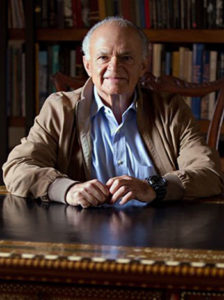 accomplished, lifelong philatelist who possessed a complete collection of stamps of Mexico, Helú was inspired by two foundational experiences in the mid-1990s. The first was a visit to then-recently opened National Postal Museum. The second was his participation in a temporary exhibition on the numismatics and philately of Oaxaca State, organized in 1996 by the Instituto de Artes Gráficas de Oaxaca.
accomplished, lifelong philatelist who possessed a complete collection of stamps of Mexico, Helú was inspired by two foundational experiences in the mid-1990s. The first was a visit to then-recently opened National Postal Museum. The second was his participation in a temporary exhibition on the numismatics and philately of Oaxaca State, organized in 1996 by the Instituto de Artes Gráficas de Oaxaca.
These experiences led Helú to create a permanent philatelic museum as a way to share his personal collection and passion for philately with the Mexican people in an atmosphere promoting reflection and coexistence through stamps, art and culture. Toward this goal, the Fundación Alfredo Harp Helú Oaxaca (FAHHO) purchased and restored a colonial-era house at 504 Calle Reforma in the historical city center of Oaxaca, and MUFI was inaugurated July 9, 1998. The museum is free and open to the public seven days per week, professionally managed and curated by FAHHO-sponsored staff.
Helú donated his personal collection to the museum; his initial gift has since been augmented by dozens of other collectors from around the world so that the museum’s holdings are now worldwide in scope. In addition, MUFI has a research library of more than 6,000 books named for Mexican philatelist Jose Lorenzo Cossío y Cosío, whose personal library forms the core of the collection.
MUFI has become a cultural center of Oaxaca State, hosting philately clubs for children and adults, lectures, book presentations, concerts and other events. The museum mounts multiple temporary exhibitions each year and has hosted several Mexico-Elmhurst Philatelic Society, International (MEPSI) conventions in Oaxaca, most recently in 2018. To accommodate the increased activity and growth, in 2000 FAHHO remodeled the building at 500 Calle Reforma and added it to the original museum. The purchase and rehabilitation of a third, adjoining building is currently underway.
Janet R. Klug, FRPSL, United States (born 1950), has said she “never met a stamp she didn’t like.” A collector from the age of 6, her specialized exhibits of Tonga, Samoa, Malaya and Japan under Australian occupation have won a World Series of Philately show 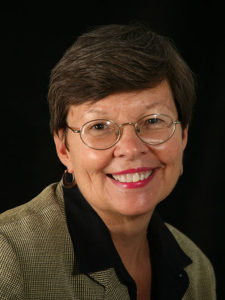 grand, a grand prix national in Australia, and an international one-frame gold.
grand, a grand prix national in Australia, and an international one-frame gold.
Klug promotes philately to a wide audience by writing about stamp collecting in an accessible, uncomplicated style attractive to beginners. Her “Refresher Course” and “Stamp Excursions” columns have appeared in Linn’s Stamp News since 2002. She wrote a “Down Under” column for Scott Stamp Monthly from 1999 to 2010 and the “Starting Point” column for The American Philatelist from 1998 to 2003. Her book-length publications include Catalog of Tin Can Mail Cachets of the Tonga Islands (1984), 100 Greatest American Stamps (2007) (co-authored with Donald J. Sundman) and Guide to Stamp Collecting (2008).
Klug was appointed a member (2010–2014) of the U.S. Postal Service Citizens’ Stamp Advisory Committee by Postmaster General John Potter and was named chair (2014–present) by Postmaster General Patrick Donahoe. She was vice chair of the National Postal Museum’s Council of Philatelists (2003–2007) and chair of its New Initiatives Committee (2009–2013). She served the American Philatelic Society (APS) as an officer for 10 consecutive years as secretary (1997–2001), vice president (2001–2003) and president (2003–2007). She was chair of the APS Committee on Accreditation of National Exhibitions and Judges (1999–2003) and was herself an accredited judge 1991–2015.
Klug has previously been recognized with the Philadelphia National Stamp Exhibition Lifetime Achievement Award (2007), the APS Writers Unit Hall of Fame (2010), the St. Louis Stamp Expo’s Elizabeth C. Pope Award for Lifetime Contributions to Philately (2011), a Daniel W. Vooys Fellowship at the American Philatelic Research Library (2012) and the Luff Award for Outstanding Service to the APS (2014).
Charles F. Shreve, FRPSL, United States (born 1954), started collecting stamps at age 12 and was soon working at a local stamp shop on Saturdays to pay for his purchases. 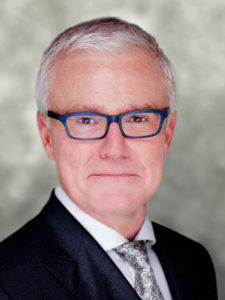 While still a teenager, he became an apprentice auction lot describer for Roger Koerber Auctions in Southfield, Michigan. He joined Sotheby Parke Bernet Stamp Auction Company in 1977 and left in 1980 to lead Steve Ivy Philatelic Auctions Inc., ultimately becoming a partner in Ivy, Shreve and Mader, one of the largest stamp auction houses in the country. He left to form Shreves Philatelic Galleries Inc. in 1994 and oversaw its sale to Spink and Son Ltd. of London in 2007, becoming president of Spink Shreves Galleries. Since 2012, Shreve has been a director of Robert A. Siegel Auction Galleries Inc. with responsibility for its international division.
While still a teenager, he became an apprentice auction lot describer for Roger Koerber Auctions in Southfield, Michigan. He joined Sotheby Parke Bernet Stamp Auction Company in 1977 and left in 1980 to lead Steve Ivy Philatelic Auctions Inc., ultimately becoming a partner in Ivy, Shreve and Mader, one of the largest stamp auction houses in the country. He left to form Shreves Philatelic Galleries Inc. in 1994 and oversaw its sale to Spink and Son Ltd. of London in 2007, becoming president of Spink Shreves Galleries. Since 2012, Shreve has been a director of Robert A. Siegel Auction Galleries Inc. with responsibility for its international division.
Using modern marketing techniques, Shreve is credited with essentially revolutionizing the way rare stamps were presented and sold at high-profile, international auctions. He also was the first stamp auctioneer to conduct his auctions live on the internet, making stamps accessible to collectors around the world.
Shreve has led major philanthropic campaigns in philately, helping to raise substantial sums for the hobby, including millions for the National Postal Museum’s William H. Gross Stamp Gallery. He spearheaded a $1 million fundraising campaign in 2000 to help refurbish the historic Collectors Club townhouse in New York City and also served as the Development Chair for World Stamp Show–NY2016.
A member of the National Postal Museum’s Council of Philatelists since 2001, Shreve is chair of the Council’s Advancement Committee. He is an expert consultant to, and member of the board of trustees of, the Philatelic Foundation and was a member of the board of governors of the Collectors Club of New York (1999–2013). He is a fellow of the Royal Philatelic Society London and a Daniel W. Vooys Fellow of the American Philatelic Research Library (2011), in addition to life memberships in the American Stamp Dealers Association, American Philatelic Society and U.S. Philatelic Classics Society. His other memberships include the American Revenue Association, Carriers and Locals Society and the Philatelic Traders Society (London).
About the Smithsonian’s National Postal Museum
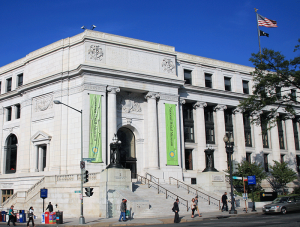 The National Postal Museum is devoted to presenting the colorful and engaging history of the nation’s mail service and showcasing one of the largest and most comprehensive collections of stamps and philatelic material in the world. It is located at 2 Massachusetts Ave. N.E., Washington, D.C., across from Union Station. The museum is open daily from 10 a.m. to 5:30 p.m. (closed Dec. 25). For more information about the Smithsonian, call (202) 633-1000 or visit the museum website at www.postalmuseum.si.edu.
The National Postal Museum is devoted to presenting the colorful and engaging history of the nation’s mail service and showcasing one of the largest and most comprehensive collections of stamps and philatelic material in the world. It is located at 2 Massachusetts Ave. N.E., Washington, D.C., across from Union Station. The museum is open daily from 10 a.m. to 5:30 p.m. (closed Dec. 25). For more information about the Smithsonian, call (202) 633-1000 or visit the museum website at www.postalmuseum.si.edu.

 The SPAA was established in 2002 to honor and celebrate living individuals for outstanding lifetime achievement in the field of philately. This achievement may include: original research that significantly advances the understanding of philately, exceptional service to the philatelic community or sustained promotion of philately to the benefit of current and future collectors.
The SPAA was established in 2002 to honor and celebrate living individuals for outstanding lifetime achievement in the field of philately. This achievement may include: original research that significantly advances the understanding of philately, exceptional service to the philatelic community or sustained promotion of philately to the benefit of current and future collectors.
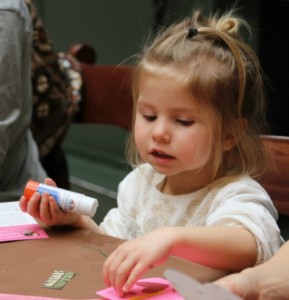 The museum provides a bountiful spread of patterned papers, rubber stamps and postage stamps for decoration, gems and other 3-D embellishments, special cut-out scissors, washi tape, stickers, markers of every color (with a surplus of red and pink!) and more! Following their own creative instincts, kids and adults can choose whichever supplies they would like to design one-of-a-kind Valentine greetings. In keeping with educating children about the Postal Service and how mail works, kids can mail their cards right from the museum — there’s a post office in the building! Visitors are also encouraged to explore the whole museum and everything else it has to offer!
The museum provides a bountiful spread of patterned papers, rubber stamps and postage stamps for decoration, gems and other 3-D embellishments, special cut-out scissors, washi tape, stickers, markers of every color (with a surplus of red and pink!) and more! Following their own creative instincts, kids and adults can choose whichever supplies they would like to design one-of-a-kind Valentine greetings. In keeping with educating children about the Postal Service and how mail works, kids can mail their cards right from the museum — there’s a post office in the building! Visitors are also encouraged to explore the whole museum and everything else it has to offer!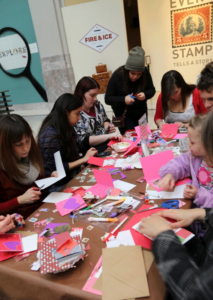 The workshop takes place in the museum’s lower-level Atrium, which, for those new to the National Postal Museum, is full of various postal transports from over the years, including a real train car, semi-truck (yes, kids can climb in and pretend to drive!), a horse-drawn carriage and airplanes hanging from the ceiling. The layout of the card-making stations and supply tables fosters sharing, friendliness and a sense of community. And the museum’s pleasant staff and volunteers are always available to answer questions, provide examples of completed cards, or help in any other way!
The workshop takes place in the museum’s lower-level Atrium, which, for those new to the National Postal Museum, is full of various postal transports from over the years, including a real train car, semi-truck (yes, kids can climb in and pretend to drive!), a horse-drawn carriage and airplanes hanging from the ceiling. The layout of the card-making stations and supply tables fosters sharing, friendliness and a sense of community. And the museum’s pleasant staff and volunteers are always available to answer questions, provide examples of completed cards, or help in any other way!
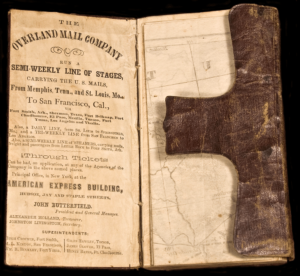 The Smithsonian’s National Postal Museum will host the 15th Maynard Sundman Lecture Wednesday, Oct. 10, from noon to 1 p.m. in the museum’s Discovery Center. Admission is free, with no reservation required. Glen Sample Ely, author of The Texas Frontier and the Butterfield Overland Mail, 1858–1861, will discuss the nation’s first transcontinental mail service from St. Louis to San Francisco. A book signing will take place immediately following the lecture.
The Smithsonian’s National Postal Museum will host the 15th Maynard Sundman Lecture Wednesday, Oct. 10, from noon to 1 p.m. in the museum’s Discovery Center. Admission is free, with no reservation required. Glen Sample Ely, author of The Texas Frontier and the Butterfield Overland Mail, 1858–1861, will discuss the nation’s first transcontinental mail service from St. Louis to San Francisco. A book signing will take place immediately following the lecture.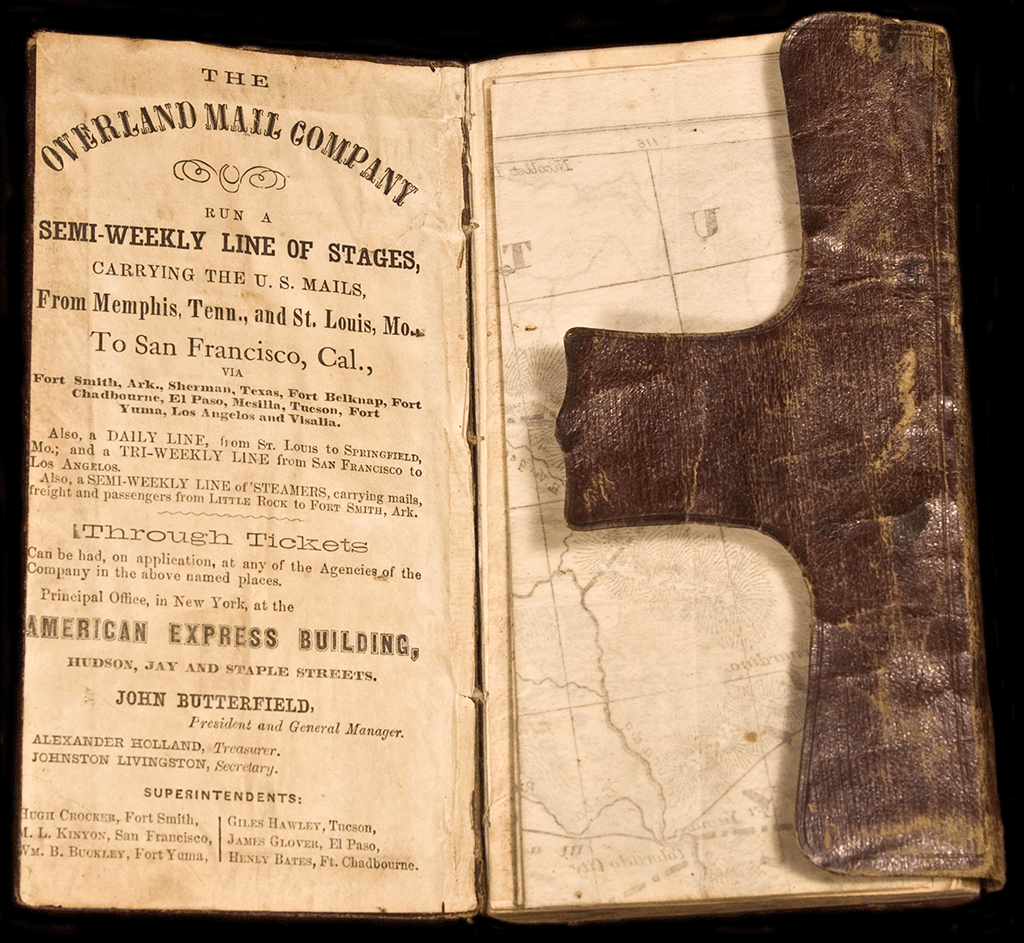
 “John Lennon: The Green Album” opened Sept. 7 at the Smithsonian’s National Postal Museum and coincides with the U.S. Postal Service’s issuance of the
“John Lennon: The Green Album” opened Sept. 7 at the Smithsonian’s National Postal Museum and coincides with the U.S. Postal Service’s issuance of the 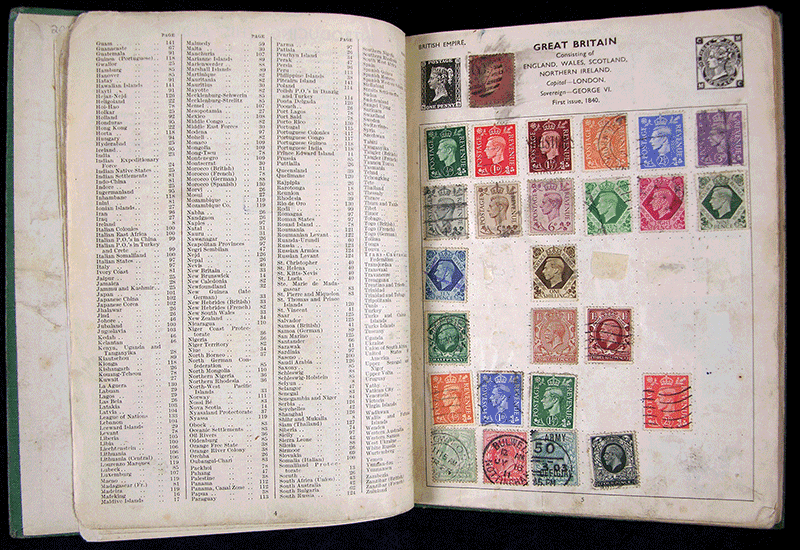 Years before his rise to fame as a musician and member of the Beatles, Lennon was a schoolboy in Liverpool, England, when his older cousin, Stanley Parkes, inspired Lennon’s interest in stamp collecting and gave him his stamp album. Lennon rubbed out Parkes’
Years before his rise to fame as a musician and member of the Beatles, Lennon was a schoolboy in Liverpool, England, when his older cousin, Stanley Parkes, inspired Lennon’s interest in stamp collecting and gave him his stamp album. Lennon rubbed out Parkes’ 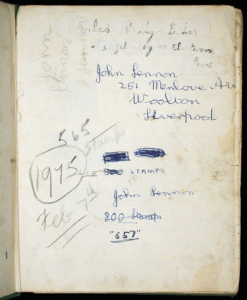 name and address on the album’s flyleaf, replacing it with his own signature and the address at Mendips, the home he shared with his aunt Mary (“Mimi”) Smith and her husband George. Already a budding artist, Lennon sketched beards and mustaches in blue ink of the likenesses of Queen Victoria and King George VI on the album’s title page. Lennon continued to collect and trade stamps for several years after receiving this album. According to Parkes, Lennon began collecting at about age 9 and actively collected stamps for several years. There is evidence throughout the album that Lennon added and removed stamps. Lennon’s handwritten notes on the flyleaf indicate the album may have contained as many as 800 stamps at some point.
name and address on the album’s flyleaf, replacing it with his own signature and the address at Mendips, the home he shared with his aunt Mary (“Mimi”) Smith and her husband George. Already a budding artist, Lennon sketched beards and mustaches in blue ink of the likenesses of Queen Victoria and King George VI on the album’s title page. Lennon continued to collect and trade stamps for several years after receiving this album. According to Parkes, Lennon began collecting at about age 9 and actively collected stamps for several years. There is evidence throughout the album that Lennon added and removed stamps. Lennon’s handwritten notes on the flyleaf indicate the album may have contained as many as 800 stamps at some point.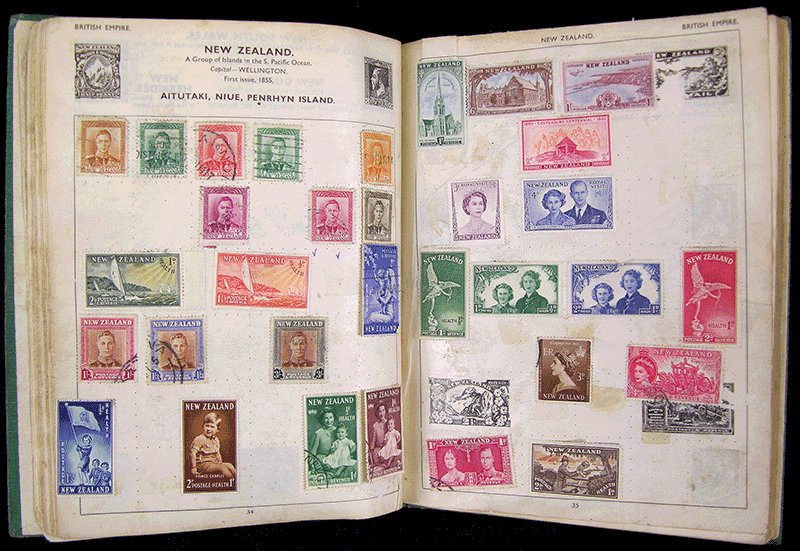
 The first week in May marks National Postcard Week. Early in the 20th century, postcard enthusiasts sent “Postcard Day” postcards on May 1st, but the modern observance began in 1984 as a way to promote postcard collecting and sending. Don’t toss that shoebox of old postcards you found in grandma’s attic-they tell stories about the past and can be valuable. And people always like to get personal mail these days.
The first week in May marks National Postcard Week. Early in the 20th century, postcard enthusiasts sent “Postcard Day” postcards on May 1st, but the modern observance began in 1984 as a way to promote postcard collecting and sending. Don’t toss that shoebox of old postcards you found in grandma’s attic-they tell stories about the past and can be valuable. And people always like to get personal mail these days.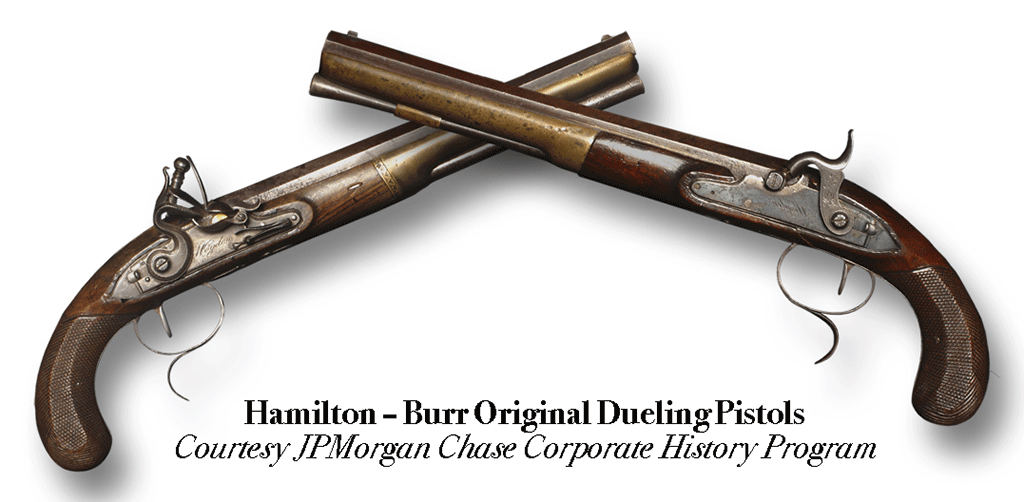
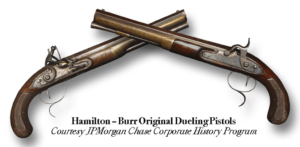 The original dueling pistols used by Hamilton, former secretary of the treasury and retired two-star general, and Vice President Aaron Burr in the duel that resulted in Hamilton’s death are on loan to the museum from JPMorgan Chase & Co. This rare public showing represents the first time the pistols have been on public display in the Washington area.
The original dueling pistols used by Hamilton, former secretary of the treasury and retired two-star general, and Vice President Aaron Burr in the duel that resulted in Hamilton’s death are on loan to the museum from JPMorgan Chase & Co. This rare public showing represents the first time the pistols have been on public display in the Washington area. Hamilton was born on the British Caribbean island of Nevis in 1755, deserted by his father at age 11 and raised by his mother who died when he was 13. Shortly after his arrival in New York in 1772, long-simmering tensions between Great Britain and its North American colonies erupted into open war. An orphan with few influential connections, Hamilton saw the American Revolution as an opportunity for rapid social advancement. He committed to the revolution and decided he and America would sink or swim together.
Hamilton was born on the British Caribbean island of Nevis in 1755, deserted by his father at age 11 and raised by his mother who died when he was 13. Shortly after his arrival in New York in 1772, long-simmering tensions between Great Britain and its North American colonies erupted into open war. An orphan with few influential connections, Hamilton saw the American Revolution as an opportunity for rapid social advancement. He committed to the revolution and decided he and America would sink or swim together.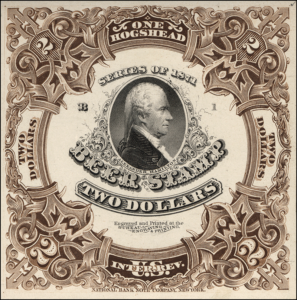 “In a Federalist-style gallery within the museum’s William H. Gross Stamp Gallery, visitors will see objects highlighting Hamilton’s extraordinary influence on our country,” said Elliot Gruber, director of the museum. “Visitors of all ages will be drawn in to the man behind the musical that is sweeping the nation.”
“In a Federalist-style gallery within the museum’s William H. Gross Stamp Gallery, visitors will see objects highlighting Hamilton’s extraordinary influence on our country,” said Elliot Gruber, director of the museum. “Visitors of all ages will be drawn in to the man behind the musical that is sweeping the nation.”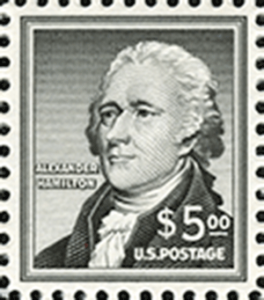 The pair of flintlock pistols have been described by Hamilton scholar and author Ron Chernow as having “the best claim to authenticity” as the pistols used in the famous duel.
The pair of flintlock pistols have been described by Hamilton scholar and author Ron Chernow as having “the best claim to authenticity” as the pistols used in the famous duel.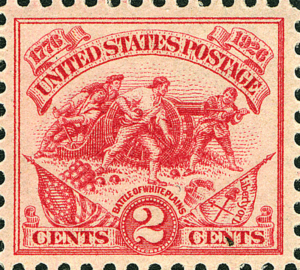 ticket, and later ordered Burr’s arrest on treason charges stemming from an alleged plot to set up an independent country in the Louisiana Purchase territories. Burr was eventually acquitted of murder, dueling and treason, and he resumed a modest law practice in New York but died bankrupt and living in a Staten Island boarding house in 1836.
ticket, and later ordered Burr’s arrest on treason charges stemming from an alleged plot to set up an independent country in the Louisiana Purchase territories. Burr was eventually acquitted of murder, dueling and treason, and he resumed a modest law practice in New York but died bankrupt and living in a Staten Island boarding house in 1836.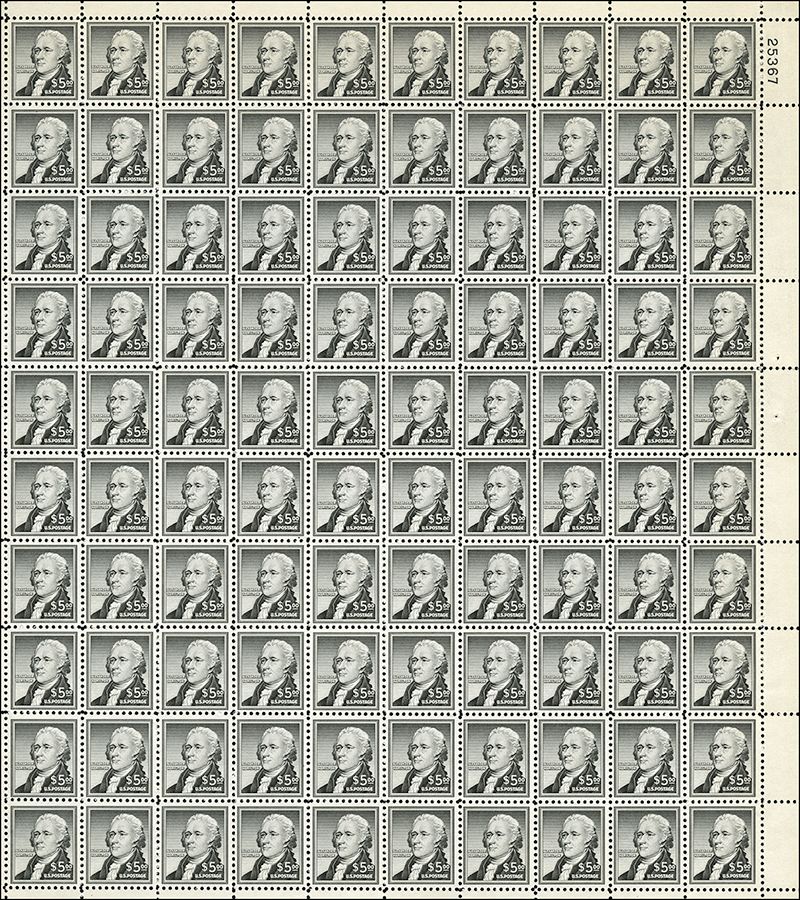
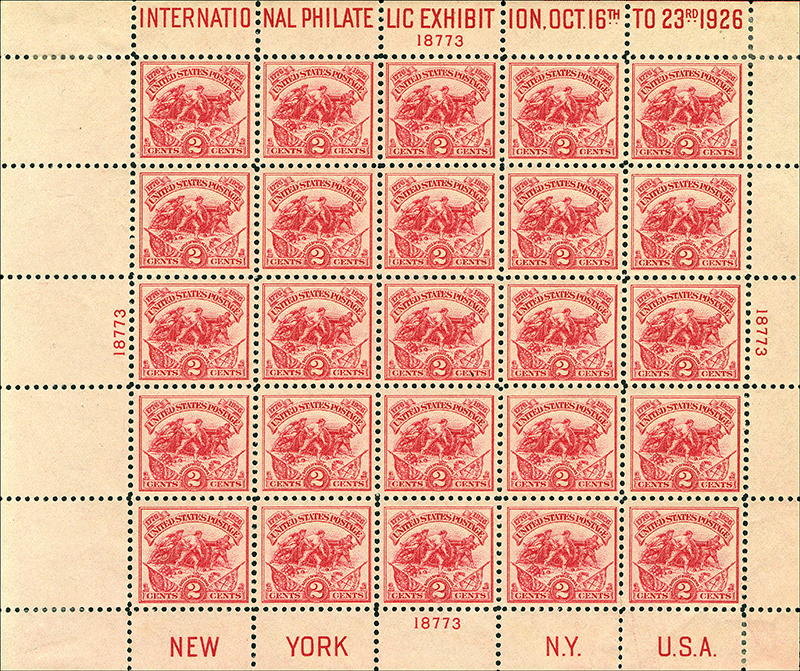
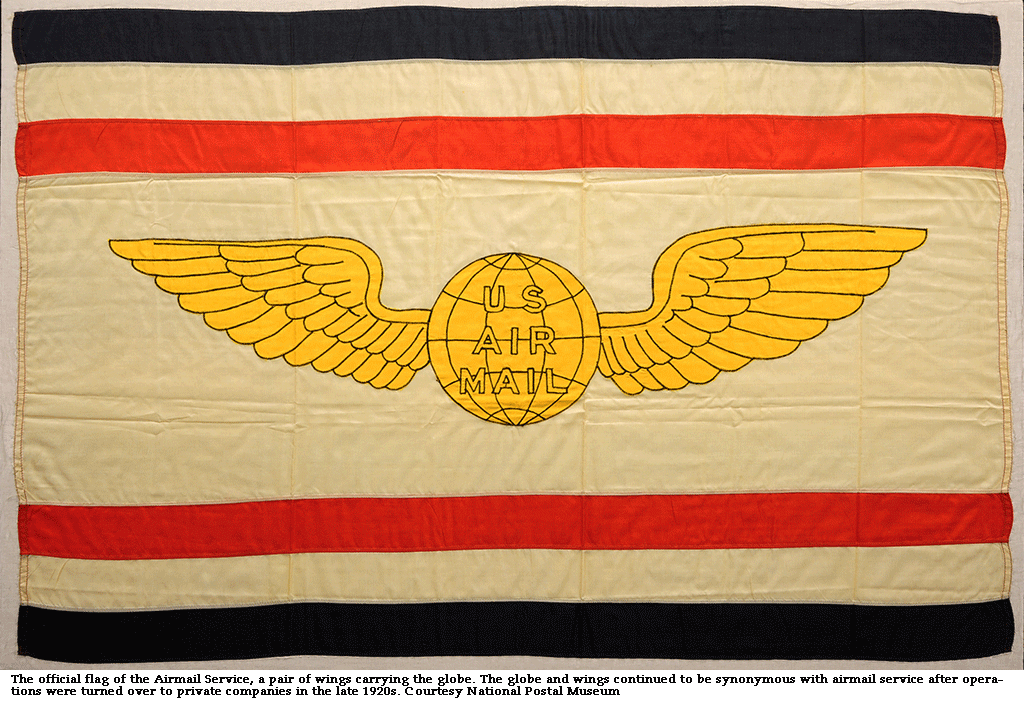
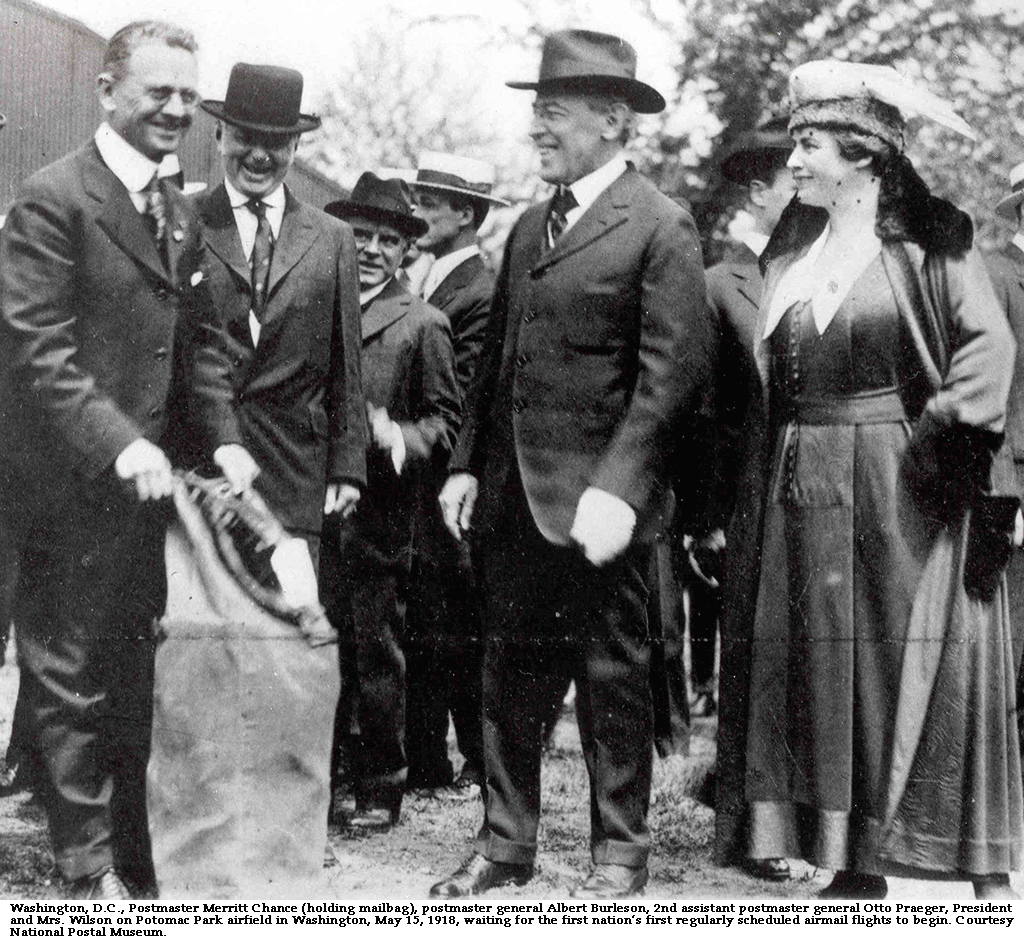 In 1918, the first regularly scheduled airmail service began operations. Planes carried mail between Washington, D.C., Philadelphia and New York City. The nation greeted the new service with enthusiasm. Crowds surrounded airfields in all three cities, eager to watch history in action. The nation became more enamored with their postal pilots as the service grew and news of the service traveled. By Sept. 8, 1920, mail was flying between New York and San Francisco.
In 1918, the first regularly scheduled airmail service began operations. Planes carried mail between Washington, D.C., Philadelphia and New York City. The nation greeted the new service with enthusiasm. Crowds surrounded airfields in all three cities, eager to watch history in action. The nation became more enamored with their postal pilots as the service grew and news of the service traveled. By Sept. 8, 1920, mail was flying between New York and San Francisco.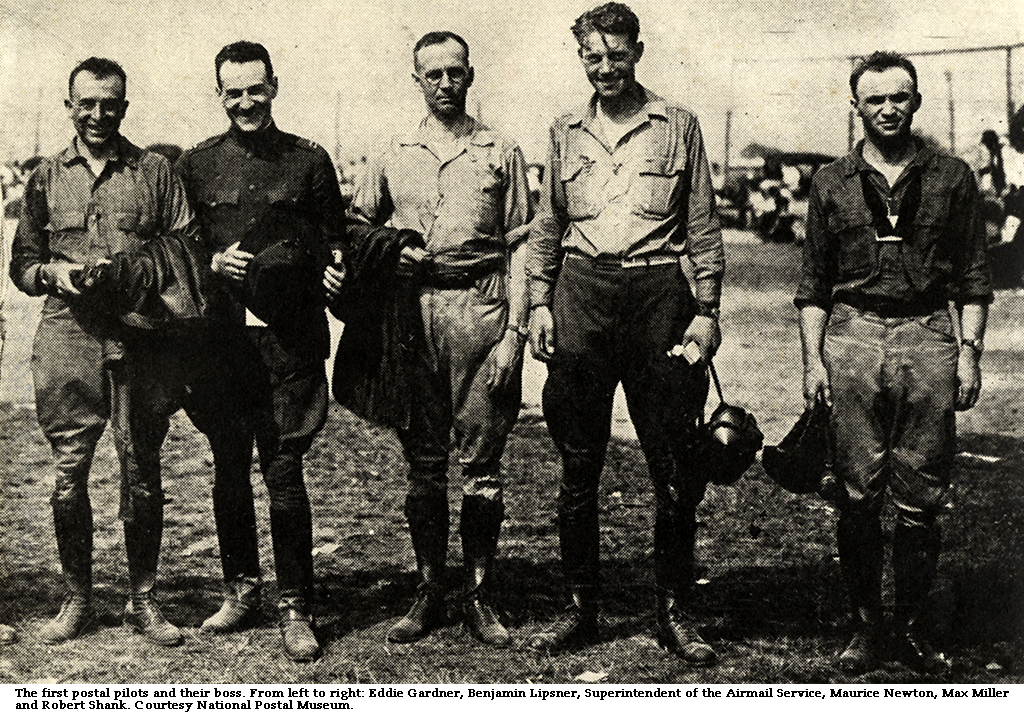 “Dozens of pilots sacrificed their lives to fly the mail for the Post Office,” said Nancy Pope, curator of the exhibition. “At a time when mail was the central communication system, moving it securely and speedily was critical to businesses and important to individuals.”
“Dozens of pilots sacrificed their lives to fly the mail for the Post Office,” said Nancy Pope, curator of the exhibition. “At a time when mail was the central communication system, moving it securely and speedily was critical to businesses and important to individuals.” The U.S. Postal Service will honor the beginning of airmail service by dedicating two U.S. Air Mail Forever stamps this year. The first, depicted in blue, commemorates the pioneering spirit of the brave pilots who first flew the mail in the early years of aviation. The first-day-of-issue ceremony will take place May 1 at 11 a.m. at the museum. The event is free and open to the public.
The U.S. Postal Service will honor the beginning of airmail service by dedicating two U.S. Air Mail Forever stamps this year. The first, depicted in blue, commemorates the pioneering spirit of the brave pilots who first flew the mail in the early years of aviation. The first-day-of-issue ceremony will take place May 1 at 11 a.m. at the museum. The event is free and open to the public.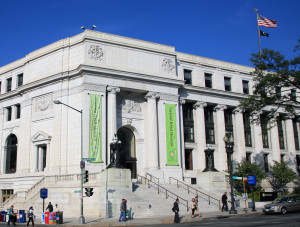 The National Postal Museum is devoted to presenting the colorful and engaging history of the nation’s mail service and showcasing one of the largest and most comprehensive collections of stamps and philatelic material in the world. It is located at 2 Massachusetts Ave. N.E., Washington, D.C., across from Union Station. The museum is open daily from 10 a.m. to 5:30 p.m. (closed Dec. 25). For more information about the Smithsonian, call (202) 633-1000 or visit the museum website at
The National Postal Museum is devoted to presenting the colorful and engaging history of the nation’s mail service and showcasing one of the largest and most comprehensive collections of stamps and philatelic material in the world. It is located at 2 Massachusetts Ave. N.E., Washington, D.C., across from Union Station. The museum is open daily from 10 a.m. to 5:30 p.m. (closed Dec. 25). For more information about the Smithsonian, call (202) 633-1000 or visit the museum website at 

